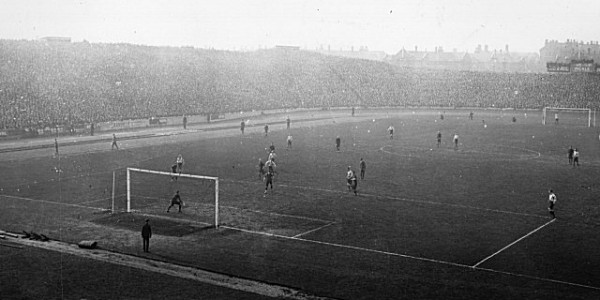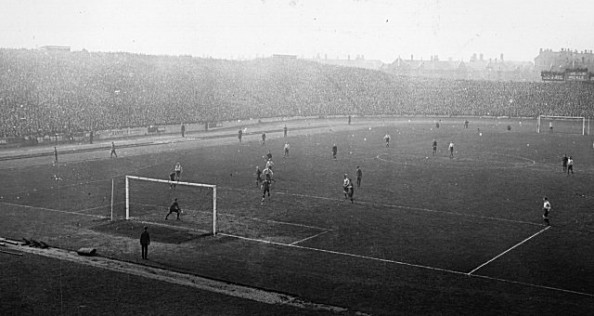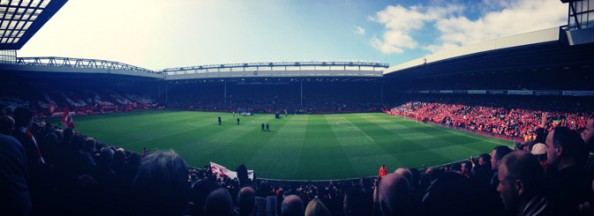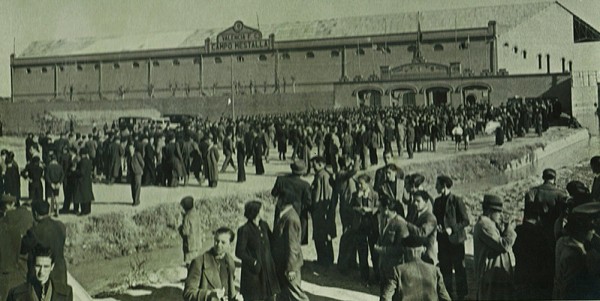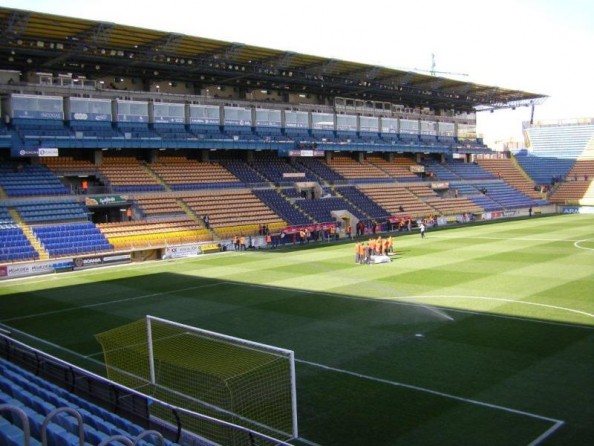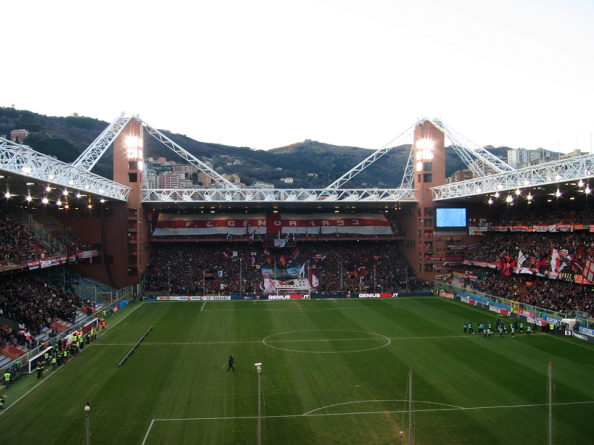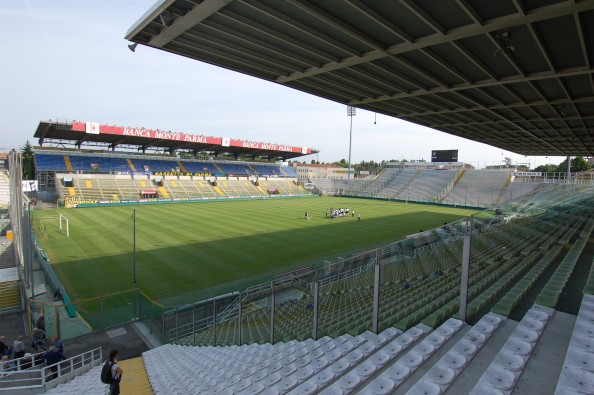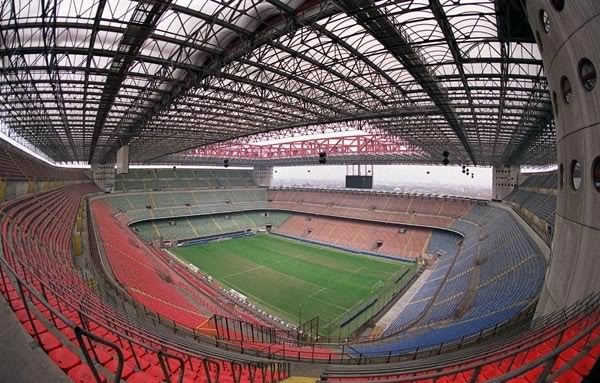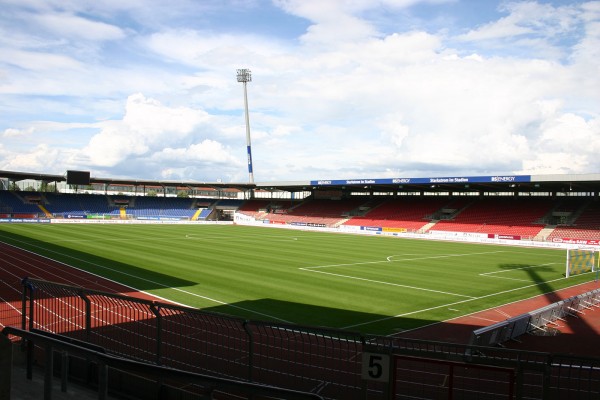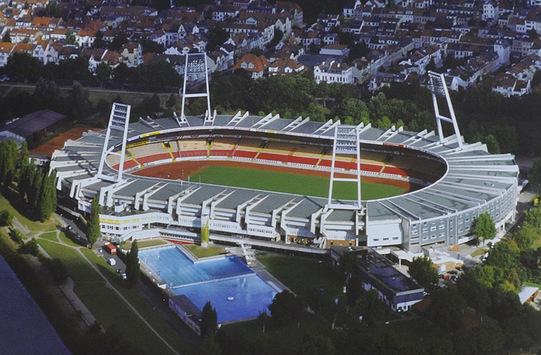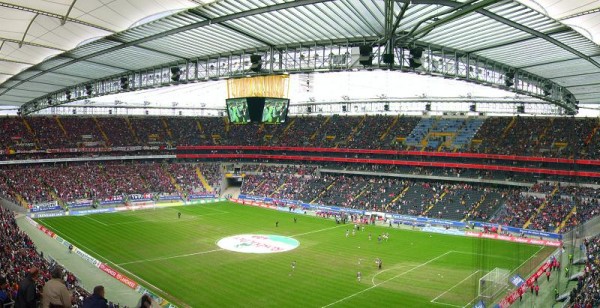When looking for the oldest stadiums in Europe, the United Kingdom is the place to find most of the desirable results, with Chelsea (Stamford Bridge), Newcastle (St. James’ Park) and Liverpool (Anfield) playing in the most ancient ground currently used by Premier League teams.
When taking a broader look at other top European leagues, no one comes close to these 19th century grounds in Italy, Spain and Germany, but there are quite a few stadiums that are celebrating over 80 birthdays, including one in Italy that’s already over a 100.
English Premier League
As we’ve mentioned, if this was a list of the oldest stadiums in Europe, only Premier League stadiums would have shown up on it. The oldest of those in the Premier League right now belong to Chelsea, Newcastle and Liverpool.
Stamford Bridge, Chelsea – 1877
Chelsea have been looking for a site that will help them move to a new stadium in recent years, without much success. Stamford Bridge was built in 1876, opening a year later, undergoing renovations in the early years of the 20th century and then again in 1990. Besides Chelsea, it’s also been the home of the London Athletics club (1877-1904) and the London Monarchs, who played in NFL Europe. It was also the venue of the FA Cup final from 1920 to 1922, before Wembley was built.It has a capacity of over 41,000, but its record attendance from 1935 is of nearly 83,000.
St. James’ Park, Newcastle – 1880
Newcastle United may have started playing there in 1892, but the ground was opened in 1880 for footballing purposes, with Newcastle West End FC, a team that dissolved 10 years after its 1882 inception, being its first tenant. It’s been a thorn in the side of many people in the North East, attempting to move it numerous times over the year, and has been the cause of many council meetings regarding the subject. Reluctance to move has led to the distinctive lop-sided appearance of the present-day stadium’s asymmetrical stands. It has a capacity of 52,404, but its record attendance is from 1930, with over 68,000 watching them play Chelsea.
Anfield, Liverpool – 1884
Another stadium that has been in the center of a moving controversy, although it seems that these days there’s a better chance of the stadium being expanded at the expense of the empty neighborhood houses than an actual move in order to give the club it’s 60,000 seater.
Everton FC were the first team to play at Anfield, staying there from 1884 to 1892, before the split of the club which created Liverpool FC, becoming the mainstays at the Stadium. It has a capacity of 45,276, but its record attendance is from 1952 in a match against Wolverhampton, when over 61,000 fans came to see the match.
Spanish La Liga
The moment we move away from England, the opening dates of the oldest top-flight stadiums enter the 20th century, as is the case of the three oldest stadiums in the Spanish La Liga, all of them opening in the 1920’s.
Estadio de Mestalla, Valencia – 1923
Opened in May 1923, Valencia have been the only club to ever play in the stadium, beginning to play there four years after it was founded. The stadium was virtually destroyed in 1957 after the Turia River overflowed its banks, but it was reopened with more improvements and upgrades, as the stadium continued to grow after its humble beginnings which were with 17,000 fans. At the moment it is the fifth-largest stadium in Spain with a capacity of 55,000. There is a Nuevo Mestalla (75,000) being built, but financial problems have halted the project.
Estadio El Madrigal, Villarreal – 1923
A stadium that opened only a month after the Mestalla, but hasn’t enjoyed its growth due to Villarreal’s much more modest line of success. It has undergone renovations in 1952 and then again in 2005 before the team competed in the Champions League for the first time.
Estadio Municipal de Balaídos, Celta – 1928
Opened in 1928, the Balaidos has been the home of Celta Vigo ever since. There have been talks about moving to a Nuevo Balaidos for over a decade, and there were hopes that winning the bid for the 2018 World Cup would push for the necessary funding to build the Nuevo Balaidos. Three matches in the 1982 World Cup were played there. It has a record attendance of 45,000 from 1982.
Italian Serie A – Stadio Luigi Ferraris, Genoa & Sampdoria – 1911
Genoa CFC were the original owners of the stadium until it became owned by the municipality during World War II. It is named for former Genoa captain Luigi Ferraris. It’s been the site of two different World Cups, first in 1934 and then again in 1990, which saw the stadium being dismantled and rebuilt, with four matches being played in it. Sampdoria began using the facility in 1946. On February 29, 2012, the United States defeated Italy 1-0 in a friendly played at the stadium. It was the first time Italy had been defeated in Genoa and the first time the US had ever defeated Italy.
Stadio Ennio Tardini, Parma – 1923
The home of Parma since 1923, named for the man who had the idea of opening the stadium. When the club was promoted to the Serie A in 1990, there were thoughts of moving the stadium to a different part of the city. Instead, the Parmalat ownership paid for expansions and renovations, altough the stadium, with a capacity of only 27,906 is one of the smallest in the Serie A. Their were plans of expansions as part of the bid to host Euro 2016, but once that bid failed, the plans were scrapped as well, and Parma’s current president has mentioned there will be no use of public money to expand or upgrade the stadium.
San Siro, AC Milan & Internazionale FC – 1926
Home to both Internazionale and AC Milan since 1926, the stadium currently has a capacity of just over 80,000, but at its peak during the 50’s it could hold over 100,000 spectators, almost five times as much from its humble beginnings of 26,000.
The stadium was named in honor of Giuseppe Meazza on March 3, 1980, who played for both clubs in the 1930s and 1940s. It’s been used for the 1965, 1970, and 2001 UEFA Champions League finals.
German Bundesliga – Eintracht-Stadion, Braunschweig – 1923
Home of Eintracht Braunschweig since 1923, it can hold up to 23,325 in attendance on football matches. The capacity was once over 38,000, but a renovation in 1925 led to a massive decrease in size. In 1981, financial difficulties forced the club to sell the stadium to the city of Braunschweig, which forced a name change to Städtisches Stadion an der Hamburger Straße. In 2008, a group of local companies bought thenaming rights to the stadium from the city and changed the name back into the original Eintracht-Stadion.
Wesertstadion, Werder Bremen – 1924
A stadium with quite a beautiful river scenery around it, the Wesertstadion has been the home of Werder Bremen since 1924. As you can tell by its modern appearance, it has undergone plenty of renovations – in 1963 when the Bundesliga was formed, and also later in 1989, 2005 and 2008. It can host 42,500 fans, but it didn’t make the cut when venues were chosen for the 2006 World Cup.
Commerzbank-Arena, Frankfurt – 1925
Opening in 1925, it went under the name of the Waldstadion until 2005, when Commerzbank bought the naming rights for 10 years. The stadium was built to hold 35,000 fans, but soon expanded into a 55,000-seater, with over 70,000 trying to get in to see a match against Nurnmberg, which led to injuries of over 200 fans and major renovations.
Today the stadium has a capacity of 51,500 fans, and it was a part of the 2005 Confederations Cup and the 2006 World Cup hosted in Germany, with four group matches and one quarterfinals match played there.
